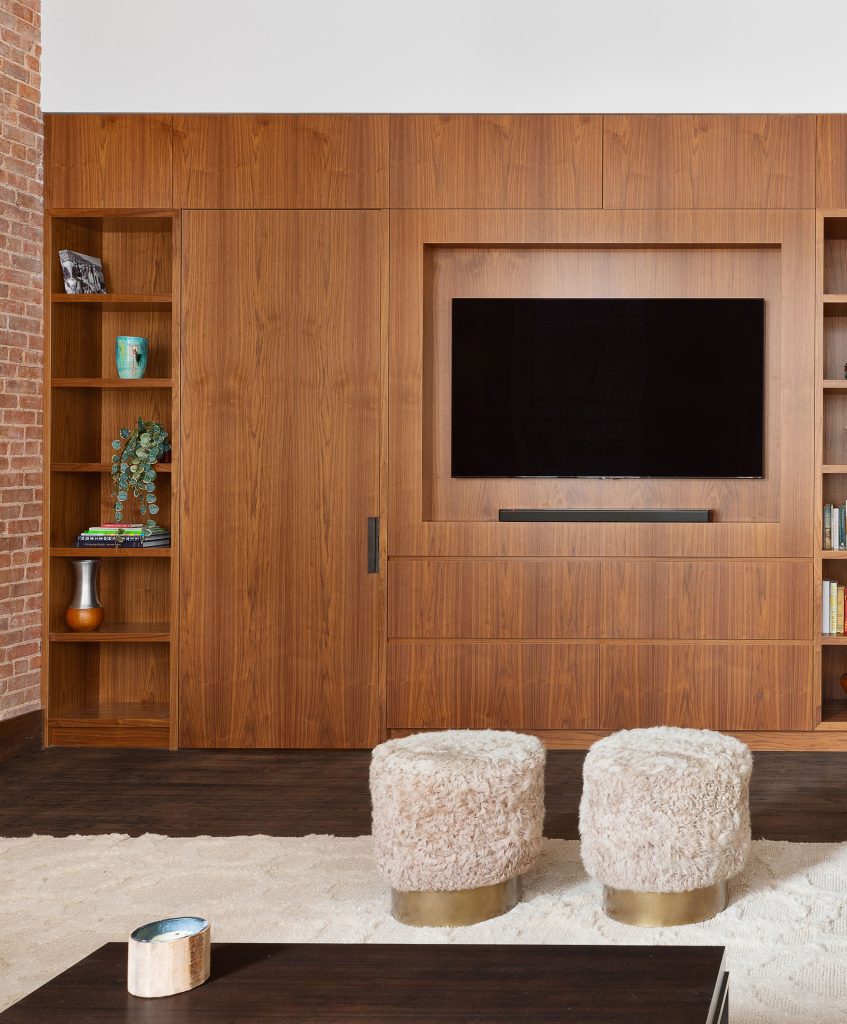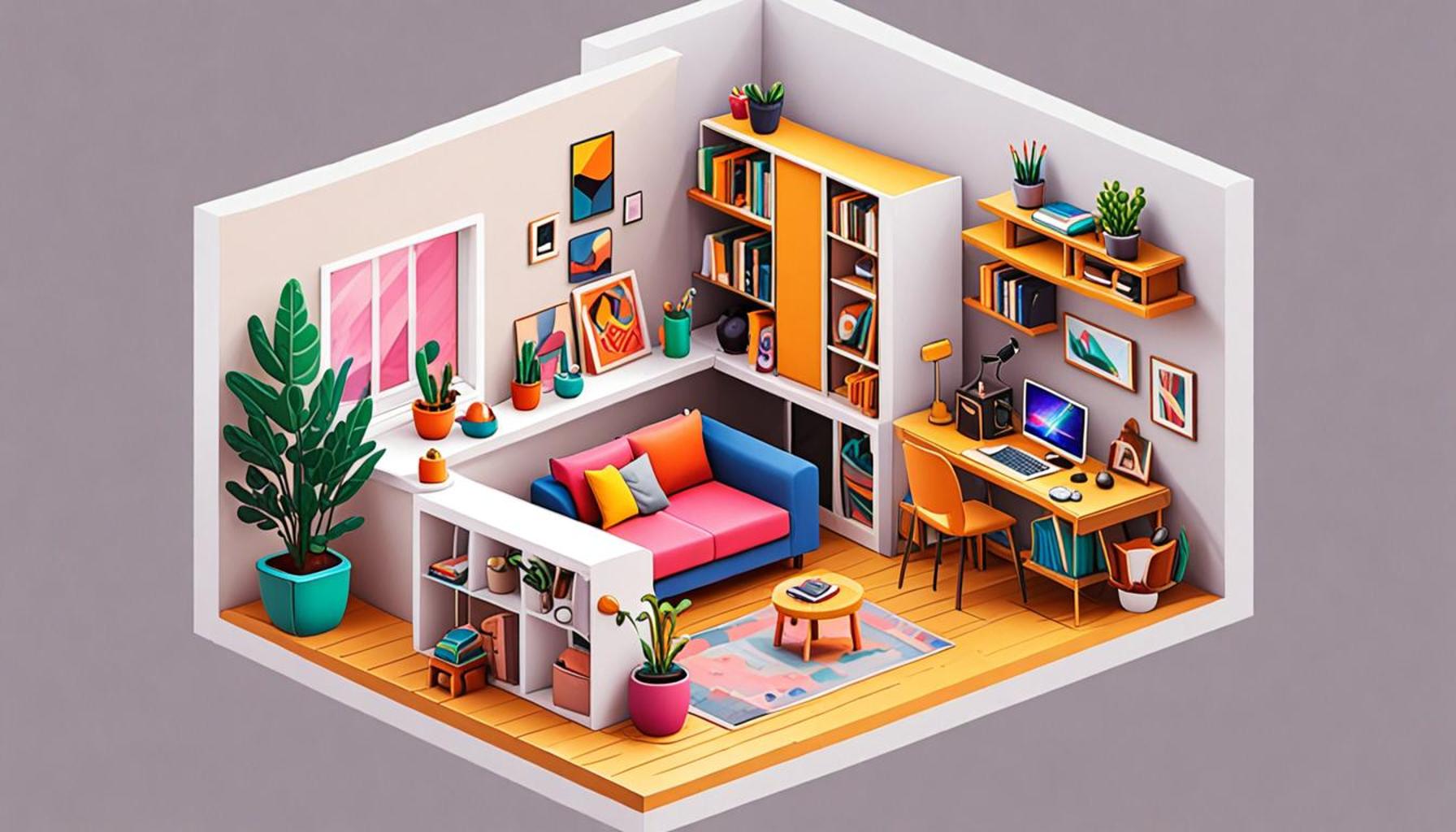Challenges of Minimalist Living: How Space Optimization Can Help with Changes and Transitions

Embracing Minimalism: An Overview
In a fast-paced world filled with distractions, many individuals are turning to minimalism as a form of liberation. The concept extends beyond mere aesthetics and provides a pathway to a more intentional and fulfilling life. While minimalist living offers various benefits, including reduced stress and increased emotional well-being, the journey is fraught with challenges that require determination, courage, and adaptability.
Common Challenges Faced
- Overcoming emotional attachments to belongings: Many people find it difficult to part with items that carry sentimental value, whether they be gifts from loved ones or mementos from past experiences. Cognitive biases can lead individuals to overvalue their possessions, making the process of decluttering emotionally taxing.
- Adjusting to a new, simplified lifestyle: As one begins to embrace minimalism, a significant lifestyle change occurs, impacting everything from shopping habits to social interactions. Moving away from consumerism may lead to feelings of deprivation before the benefits of this new lifestyle are fully realized.
- Finding efficient organization methods that work: It’s not just about minimalizing what you own; it’s also about honing effective organization skills. Without a plan, clutter can rebuild swiftly, causing frustration for those striving for simplicity.
- Dealing with societal expectations and norms: Society often equates success with material wealth, which can clash with minimalist values. Navigating social circles that prioritize consumerism can create additional stress for individuals seeking a different path.
To truly enjoy the benefits of living with less, one must confront these challenges head-on. The transition can be overwhelming, yet it is also profoundly rewarding—potentially leading to a newfound sense of mental clarity and focus that was previously obscured by physical clutter.
Space Optimization: A Solution
Space optimization becomes a pivotal strategy during this transition. With thoughtful planning and execution, individuals can create an environment that enhances their minimalist lifestyle while addressing their unique challenges. This involves practical strategies, such as:
- Utilizing multifunctional furniture: Pieces that serve multiple purposes, such as a sofa bed or an ottoman that doubles as storage, can maximize space while reducing the number of items needed. This not only saves physical space but also creates a visually appealing environment that embodies minimalism.
- Implementing organizational systems: Effective organizational methods, such as categorizing items by usage or frequency, can streamline the living space. Implementing systems like labeled bins and designated zones for items (like a “donate” box) helps maintain order and encourages ongoing decluttering.
- Decluttering regularly to maintain simplicity: The journey into minimalism doesn’t end after a significant decluttering session; rather, it is an ongoing process. Scheduling regular assessments of one’s belongings can prevent accumulation over time and reinforce the minimalist lifestyle.
By adopting these practices, one can transform their living spaces and make the shift to minimalism not just possible, but fulfilling. Beyond simply reducing clutter, embracing minimalism invites a greater appreciation for quality over quantity, ultimately enhancing one’s overall quality of life. This article will delve deeper into how space optimization plays a critical role in navigating the complexities of minimalist living, providing readers with a roadmap for their own minimalist journey.

DISCOVER MORE: Click here to learn how minimalism boosts workplace efficiency
Navigating the Transition: Embracing Change through Space Optimization
Embarking on a minimalist journey requires more than just a desire for simplicity; it demands a strategic approach to transitions. As individuals declutter their lives, they often find themselves grappling with the emotional ramifications of letting go, adjusting to new routines, and creating functional spaces. Addressing these challenges of minimalist living head-on through space optimization can make all the difference, facilitating a smoother transition towards a less cluttered life.
Understanding Your Space and Its Potential
One key tenet of minimalism is recognizing the potential of your living space. Many people fail to see how their homes can be both functional and aesthetically pleasing while accommodating a minimalist lifestyle. Understanding the dimensions of your space allows for a clear vision of what can be eliminated and what should be retained. Space optimization not only frees up physical room but also minimizes mental clutter, paving the way for better decision-making and increased focus on what truly matters.
- Define your priorities: Spend time reflecting on what items truly enhance your life. This process helps to create a mental framework that makes it easier to let go of unnecessary possessions.
- Create a layout that promotes simplicity: Assess the flow of your space. Arrange furniture and belongings in a manner that enhances accessibility and comfort while reducing visual distractions.
- Identify areas of congestion: Many homes contain areas that become informal storage spaces, often filled with items that are rarely used. Recognizing these congested areas can prompt timely decluttering efforts, contributing to a more streamlined environment.
Moreover, applying the principles of space optimization can reveal practical solutions to some of the most common hurdles faced by those leaning into minimalist living. For example, consider the challenge of inadequate storage options. Instead of resorting to traditional single-purpose furniture, investing in innovative multi-functional solutions—like a coffee table with hidden storage—can alleviate these concerns while keeping the living space visually airy and organized.
Establishing Sustainable Decluttering Habits
The journey to minimalism is not a one-time event but rather a continuous process that requires regular maintenance. Establishing a routine around decluttering can help mitigate the feeling of overwhelm that often accompanies significant lifestyle changes. By making space optimization a cornerstone of this routine, individuals can cultivate a minimalist mindset that encourages ongoing evaluation of their possessions.
- Implement a “one in, one out” rule: This simple guideline ensures that every time you acquire a new item, another must be donated or discarded.
- Schedule regular assessments: Take the time to deliberate on your belongings every few months. This not only reinforces the principles of minimalism but also prevents new clutter from emerging.
- Encourage mindfulness in purchases: Before acquiring new items, thoroughly consider their necessity and long-term value in your life.
By incorporating these practices into daily life, individuals can not only navigate the complexities of minimalism but also derive lasting benefits from their simplified lifestyle. The intersections between space optimization and emotional well-being become increasingly evident, leading to greater capacity for personal growth and clarity in decision-making. As individuals face their challenges head-on, the rewards of minimalist living begin to unfold, revealing a path not just to minimalism, but to a more intentional way of life.
Challenges Faced in Minimalist Living
Minimalist living is often perceived as a serene lifestyle choice, but it comes with its own set of challenges. Transitioning to a minimalist home often requires a significant mental shift. Let’s explore some of the challenges that individuals can encounter when adopting this lifestyle. Firstly, emotional attachment to belongings can hinder the decluttering process. Many people find it difficult to let go of items that carry sentimental value. This attachment not only complicates the process but also reinforces the need for space optimization. Strategies such as understanding the value of experiences over possessions can help mitigate this issue. Another challenge lies in space optimization strategies themselves. While one may seek to maximize space, it can often involve a great deal of time and resources. Investing in multifunctional furniture and creative storage solutions may contribute to the expense and effort required for a streamlined minimalist setup. Moreover, frequent reorganizing is often necessary, which can feel overwhelming for many.Social pressures can also be at play. Society often equates abundance with success, making the transition to minimalism feel counterintuitive. Individuals may face skepticism from friends and family, potentially leading to feelings of isolation. Understanding the intended benefits of a minimalist lifestyle can help individuals remain steadfast in their journey. Incorporating mindfulness practices can also alleviate some of these challenges. Not only does mindfulness enhance appreciation for a clutter-free space, but it also fosters emotional resilience. Committing to a minimalist lifestyle can facilitate profound personal growth, allowing one to embrace essential quality of life changes during transitions.
Space Optimization as a Solution
Optimizing space is pivotal in overcoming the hurdles of minimalism. Effective space management allows individuals to redefine their relationship with their belongings and their environment. Adopting innovative organization techniques, such as the KonMari Method, focuses on keeping only what “sparks joy.” This can be a liberating experience, transforming clutter into a harmonious living space.Additionally, utilizing vertical space through shelves and wall-mounted storage can significantly increase available space without adding clutter. Incorporating practical solutions like these not only enhances the aesthetic but also makes life within a minimalistic framework more manageable. Implementing open shelving can creatively display cherished items while encouraging a sense of openness.Moreover, developing a habit of regular evaluations of items can keep clutter at bay. Committing to a seasonal check-in to assess belongings and eliminate excess is a proactive approach that instills discipline and clarity. Engaging in these practices doesn’t just streamline physical spaces; it also frees the mind from distractions and fosters a more intentional lifestyle.In summary, while challenges in minimalist living can be daunting, the path toward effective space optimization is a rewarding journey that encourages reflection, growth, and adaptability. Embracing these changes can provide a fulfilling framework for more mindful living, paving the way for transformative changes in one’s daily life.
DISCOVER MORE: Click here to learn about the impact of space on your well-being
Creating a Positive Living Experience through Intentional Design
As individuals immerse themselves in the world of minimalism, a common challenge arises: the need to cultivate an environment that genuinely reflects their lifestyle changes. This involves transitioning from a cluttered, disorganized space to one that promotes peace and functionality. Through careful space optimization, individuals can enhance their living experience, making their homes not only more spacious but also more inviting and aligned with their minimalist goals.
Rethinking Design Elements
In the quest for minimalism, the design elements of a home play an indispensable role in shaping how space is perceived and utilized. Many traditional home designs include superfluous decor or cumbersome furniture that detracts from a minimalist aesthetic. By rethinking design choices, residents can create compositions that prioritize serenity over excess. Space optimization techniques encourage the use of a cohesive color palette, multifunctional furniture, and strategically placed decor that elevates the ambiance without overwhelming the senses.
- Choose a neutral color scheme: A lighter and more neutral color palette can create an illusion of larger spaces and facilitate a sense of calm. Colors like whites, grays, and earth tones contribute to an ethereal environment.
- Select multifunctional furniture: Incorporating furniture that serves multiple purposes, such as nesting tables or convertible sofas, minimizes clutter while providing essential functionality.
- Curate your decor: Limit decorative items to a select few that resonate with your personal story and enhance overall satisfaction with your space.
These design modifications not only aid in space optimization but also foster a deeper emotional connection to the living environment, making the journey toward minimalism much more palatable.
Building an Organized Mindset
The mental aspect of minimalism often proves to be considerable; thus, cultivating an organized mindset is essential. The pressures of modern life can easily lead to accumulating unnecessary items and chaotic surroundings, contradicting minimalist ambitions. By applying space optimization to their mental landscape, individuals can clarify their thoughts and streamline emotional attachments to possessions.
- Practice visualization: Visualizing an organized space can help in digestion of how a decluttered living area truly impacts one’s mental health and emotional state. Pictures of minimalist spaces can serve as inspiration and motivation.
- Engage in mindfulness exercises: Mindfulness can improve focus, reduce anxiety, and facilitate better decision-making regarding the items you choose to keep or let go.
- Volunteer for regular digital decluttering: Minimalism is not limited to physical spaces—digital clutter often goes unnoticed. Regularly organizing files, emails, and digital media can contribute to a clearer, more productive mental space.
As individuals integrate these practices into their routines, they begin to experience a transformative shift in their relationship with both their physical environment and their inner worlds. The combination of an organized mindset and optimized living spaces fosters a profound sense of peace, essential for successful transitions into minimalist living.
The Role of Community Support
While embracing minimalism often appears to be a solitary journey, community support is integral to overcoming the challenges associated with lifestyle changes. Engaging with others who are also navigating minimalist living can provide encouragement, accountability, and new perspectives on space optimization.
- Join local minimalist groups: Most urban and suburban areas are rich with organizations that foster community around minimalism, offering experiences that promote shared learning and growth.
- Attend workshops and seminars: Participate in events focused on decluttering and optimizing spaces to learn firsthand from experts and connect with like-minded individuals.
- Share your journey on social media: Creating an online community or sharing experiences on platforms can inspire others and create networks of support for mutual growth.
By fostering connections and embracing community resources, individuals can better navigate the challenges of minimalist living, ultimately leading to a more intentional existence marked by clarity, purpose, and meaningful relationships.
DIVE DEEPER: Click here to discover how mindfulness can transform your decision-making</
Embracing Minimalism: The Path Forward
In conclusion, the journey toward minimalist living is fraught with challenges, yet the rewards can be transformative. Space optimization serves as a crucial tool in addressing these challenges, enabling individuals to create environments that reflect their values and enhance their overall well-being. By rethinking design elements, fostering an organized mindset, and seeking community support, aspiring minimalists can simplify their lives while cultivating a profound connection to their surroundings.
The mindset shift required for minimalism is as vital as the physical decluttering of spaces. Engaging in mindfulness and visualization can clarify intentions and priorities, ultimately encouraging healthier relationships with both possessions and oneself. Coupled with intentional design choices that prioritize functionality and tranquility, individuals can create homes that not only reduce stress but also inspire a sense of peace.
Moreover, building connections with others on a similar path can provide invaluable support and exposure to diverse perspectives on space optimization. Whether through local groups, workshops, or social media platforms, shared experiences can serve to bolster motivation and accountability, making the pursuit of minimalism less daunting and more fulfilling.
Ultimately, embracing minimalist living is not merely about reducing belongings but about enhancing life quality. By transforming both physical and mental spaces, individuals can navigate the complexities of change and transition with grace, creating a life that is not only simpler but also richer in meaning and purpose.



